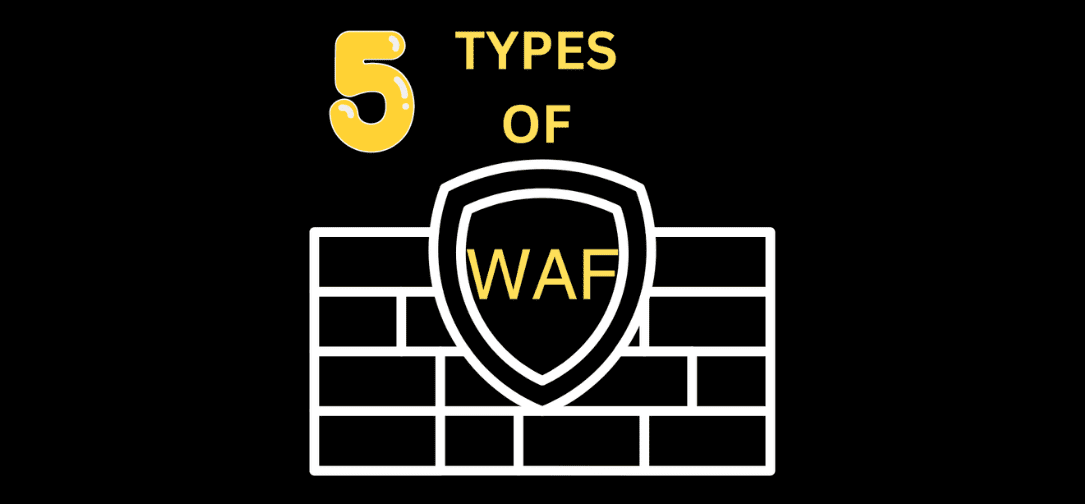In today’s digital landscape, websites are constantly under threat from various cyberattacks, making web application security a top priority for businesses and individuals alike. Among the essential tools for safeguarding websites, Web Application Firewalls (WAFs) stand out as a crucial defense mechanism. WAFs act as a barrier between a web application and the internet, filtering and monitoring HTTP traffic between a web application and the internet. They help protect against common web-based threats such as SQL injection, cross-site scripting (XSS), and other forms of attacks. Here, we’ll explore five types of Web Application Firewalls designed to keep your website secure.
1) Network-based WAFs:
Network-based WAFs are positioned at the perimeter of a network, often as a hardware appliance or a virtual instance within the network infrastructure. They intercept and inspect incoming traffic before it reaches the web application servers. These WAFs analyze network packets to identify malicious payloads and patterns, blocking potentially harmful requests in real-time. Network-based WAFs are effective for protecting multiple web applications across an entire network infrastructure, making them suitable for large enterprises with complex IT environments.
2) Host-based WAFs:
Host-based WAFs are installed directly on web servers, operating as software components integrated into the web server environment. Unlike network-based WAFs that filter traffic at the network perimeter, host-based WAFs provide protection at the application layer, examining HTTP requests and responses within the web server. By residing closer to the web application, host-based WAFs offer granular control over application-specific vulnerabilities and can provide deeper insights into application behavior. They are particularly useful for securing individual web applications or environments where deploying network-based solutions is impractical.
3) Cloud-based WAFs:
Cloud-based WAFs offer web security solutions delivered via the cloud, providing scalable and easily deployable protection for websites and web applications. These WAFs operate off-site, routing web traffic through distributed data centers where it undergoes inspection and filtering. Cloud-based WAFs offer several advantages, including rapid deployment, automatic updates, and the ability to handle massive volumes of traffic without impacting network performance. They are well-suited for businesses of all sizes, offering robust protection against web-based threats without the need for extensive hardware or software investment.
4) Reverse Proxy WAFs:
Reverse Proxy WAFs act as an intermediary between clients and web servers, intercepting incoming requests on behalf of the web server. When a request is received, the reverse proxy WAF evaluates it for potential threats before forwarding it to the web server. This architecture helps shield the web server’s identity and infrastructure, as clients interact directly with the reverse proxy WAF rather than the web server itself. Reverse proxy WAFs offer advanced features such as content caching, SSL termination, and load balancing, in addition to security capabilities, making them versatile solutions for enhancing web application performance and security simultaneously.
5) API Security Gateways:
With the proliferation of APIs (Application Programming Interfaces) in modern web applications, API Security Gateways have emerged as a specialized form of WAF tailored to protect APIs from security threats. API Security Gateways analyze incoming API requests and responses, enforcing security policies and preventing unauthorized access or malicious activities. These gateways provide features such as authentication, authorization, and encryption to ensure the confidentiality, integrity, and availability of API resources. As APIs become integral components of web applications, API Security Gateways play a crucial role in safeguarding sensitive data and preventing API-related vulnerabilities.
In conclusion, Web Application Firewalls are indispensable tools for defending against a wide range of web-based threats and keeping websites secure. By deploying the right type of WAF according to the specific needs and infrastructure of your organization, you can effectively mitigate risks and safeguard your web applications from potential cyberattacks. Whether it’s network-based, host-based, cloud-based, reverse proxy, or API-focused, each type of WAF offers unique advantages in terms of deployment, scalability, and functionality. By adopting a multi-layered approach to web application security that incorporates WAFs along with other security measures, businesses can significantly enhance their overall cybersecurity posture and maintain the integrity and availability of their web services.



































